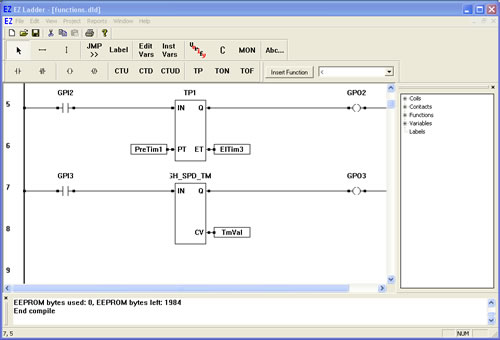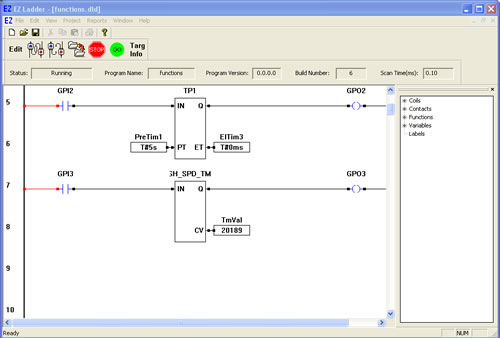TIMERS
| HIGH_SPD_TMR - High Speed Timer |  |
| The HIGH_SPD_TMR is a 100 microsecond resolution timer. When the IN detects a rising edge transition, the timer resets and begins timing from zero. When the IN detects a falling edge transition, the timer latches the current timer value. CV holds the current elapsed time when the timer is timing and the latched elapsed timer value when the timer stops timing. The output will be in 100 microsecond increments as an integer. Example: if the CV is 1000 then the actual time would be 100 milliseconds. |


You have completed the HIGH_SPD_TMR exercise.
Note: The TON, TOF and TP timer circuits are still functional in addtion to the HIGH_SPD_TMR timer circuit you just created.